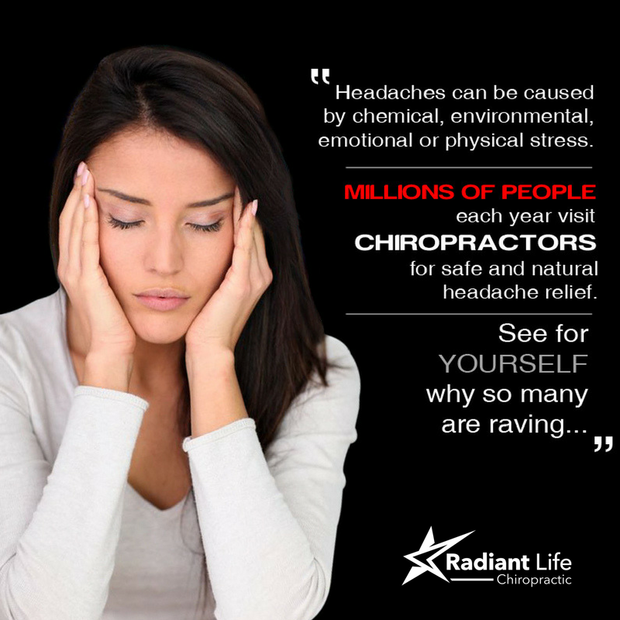How to Relieve Headaches Naturally
Headaches are definitely not normal, but they are extremely common. Nearly everyone has a headache occasionally. They are one of the most common reasons for visiting the doctor. More than 250 million work days are lost each year due to headaches at a cost of 25 billion dollars per year. Less well recognized is the toll of headache disorders characterized by very frequent headaches: up 5% of adults have a headache every – or nearly every – day. The number of people suffering from headaches that frequently was surprising to me. I could not imagine living with constant, debilitating pain.
Muscle tension headaches and migraine headaches are by far the most common types of headaches, but sinus infections and other problems such as chronic eye strain, high blood pressure and improper diet can also lead to headaches. In rare cases, headaches can be attributed to more serious conditions such as brain tumors or diabetes. As you can see, there are many causes of headaches, but non-steroidal anti-inflammatory drug (NSAID) deficiency is not one of them. NSAIDs, like aspirin and Aleve, are often used to deal with the pain associated with headaches, but they do not correct the underlying cause of the headache. It is just a temporary bandage. NSAIDs are also not supposed to be used for more than 10 days, but I have plenty of patients who came in using them daily for chronic bouts with aches and pains for much longer term than 10 days. Side effects of NSAID use include the following:
- Stomach pain and heartburn
- Stomach ulcers
- Headaches and dizziness
- Ringing in the ears
- Allergic reactions such as rashes, wheezing, and throat swelling
- Liver or kidney problems
- High blood pressure
- Leg swelling
Interesting that a medication popularly used for headaches has headaches listed as a potential side effect. Getting relief from pain is great, but better than covering up the pain is finding out why you are experiencing the pain in the first place and correcting that. Here are some other things that you can try to help with headaches:
- Nutrition Changes: Reducing (or eliminating) inflammatory foods such as sugars, white flour, dairy, and gluten can have a positive impact on headache symptoms.
- Less Screen Time: Eye strain can lead to headaches. It is smart to get your eyes checked to make sure you don’t need glasses or a change in prescription. In addition, staring at computers, phones, tablets, etc. can cause tension on your eyes. Consider reducing screen time, especially at night.
- Reduce Stress: Chronic stress puts us in a fight-or-flight state that causes hormonal changes that increase our sensitivity to pain. Finding a stress-relieving activity is so beneficial to allow the body to heal.
- Posture Improvement: Posture issues, especially forward head posture, can increase tension and strain on the muscles and nerves in the neck and have been associated with migraines.
- Chiropractic Care: A study produced in the mid-1990’s revolutionized headache research. A Russian-born researcher named Dr Nikoli Bogduk determined that all headaches shared a relationship with the neck. Dr. Bogduk noted that every single headache sufferer shared an important connection, abnormal nerve function in the upper neck. Chiropractors identify areas of nerve dysfunction in the neck and correct them using gentle, specific adjustments.
If you are tired of dealing with headaches and want to figure out why you are experiencing them so that you can truly correct the issue, then give us a call at 215-259-5100! We’d love to help.

